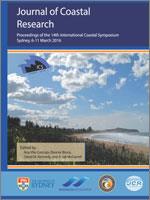Vilumaa, K.; Tõnisson, H.; Sugita, S.; Buynevich, I.V.; Kont, A.; Muru, M.; Preusser, F.; Bjursäter, S.; Vaasma, T.; Vandel, E.; Molodkov, A., and Järvelill, J.I., 2016. Past extreme events recorded in the internal architecture of coastal formations in the Baltic Sea region. In: Vila-Concejo, A.; Bruce, E.; Kennedy, D.M., and McCarroll, R.J. (eds.), Proceedings of the 14th International Coastal Symposium (Sydney, Australia). Journal of Coastal Research, Special Issue, No. 75, pp. 775–779. Coconut Creek (Florida), ISSN 0749-0208.
The postglacial uplift and transgressive-regressive phases of the Baltic Sea have affected the formation and displacement of sandy accumulation forms in the region. The dune-ridge complexes preserve a geological record of past sea-level fluctuations, coastal evolution, and extreme events, and offer insights into major driving mechanisms. This study aims to improve methodologies for identifying different storm signatures in coastal deposits using examples from Estonia and Latvia. The paleo-beach ridges are typically covered by aeolian sand, and the inter-ridge swales are mostly filled with organic sediments. Ground-penetrating radar surveys corroborate distinct textural patterns in sand layers underneath the ridges and swales. In the ridges, sharp seaward-dipping reflections represent storm scarps. The ridge sequences without dipping reflections suggest either aeolian origin or longshore transport; smaller sandy ridges, which are buried under peat layers, reflect prolonged, calmer phases. Compound dunes with ridges in their cores indicate major coastal events or shifts in atmospheric conditions that would have exposed wide sand areas to wind and facilitated dune development. This study demonstrates that the aeolian processes and changes in storminess have played an important role in the genesis of ridge-swale complexes in the Baltic Sea Region.





